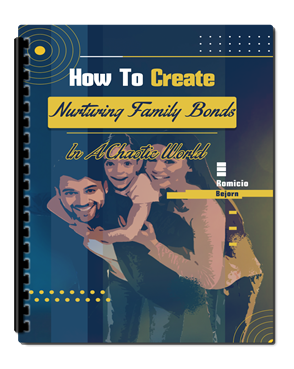Transitioning a loved one to assisted living can be an emotional and complex process for families.
It often comes with a mix of relief, guilt, anxiety, and hope as everyone adjusts to the changes involved.
Families may face difficult decisions, coupled with the challenge of supporting their loved one through this significant life shift.
Understanding and addressing these emotional hurdles is crucial for creating a smoother transition and fostering a positive experience for everyone involved.
Let's explore the common emotional challenges families encounter and how to approach them with empathy and confidence.
1)) Guilt
The transition to assisted living can be an emotionally complex time for families, often bringing up feelings of guilt that can be difficult to process.
Many caregivers and loved ones wrestle with whether they have made the right decision, questioning if more could have been done to keep their family members at home.
These feelings are natural and can stem from a deep sense of responsibility and love for the individual moving into assisted living.
It is important to remember that choosing this path often ensures a safer and more supportive environment, one where professional care is available around the clock.
By focusing on the benefits, such as increased social interaction, opportunities for engagement, and a higher quality of life, families can begin to reframe their perspective, finding comfort in knowing that their loved one’s health and well-being are being prioritized.
Open communication and support within the family unit can also help ease this emotional challenge, fostering understanding and reassurance during this significant life transition.
2)) Fear Of Loss
The transition to assisted living can bring about deep feelings of uncertainty and apprehension, especially when individuals feel like they are leaving behind familiar surroundings or treasured routines.
For many families, this period is filled with delicate emotions as their loved ones grapple with the idea of change and its implications.
To help alleviate these concerns, it is essential to approach the discussion with empathy, patience, and a focus on the positive opportunities that assisted living can provide—such as access to professional care, a sense of community, and enhanced safety.
Encouraging an open dialogue and involving everyone in the decision-making process can significantly help in addressing worries, while also reassuring loved ones that their values and preferences are being respected.
3)) Resistance To Change
The process of moving to assisted living can evoke a mix of emotions and uncertainties for both the individual and their family members.
It is essential to approach this transition with compassion, patience, and clear communication.
Addressing concerns openly and providing thorough information about the benefits and support available in the new environment can ease apprehensions.
Families can also visit the facility together beforehand, helping to familiarize everyone with the surroundings and staff.
Creating a sense of continuity by incorporating personal belongings or mementos into the new space can offer comfort and a feeling of home.
By fostering understanding and empathy, it becomes possible to build a positive framework for this new chapter, ensuring that the well-being and quality of life of all involved remain a top priority.
4)) Financial Concerns
Adjusting to a new living environment can be a deeply emotional experience for families, requiring careful consideration and communication.
It is important to recognize the multifaceted emotions involved, ranging from apprehension about change to the hope for an improved quality of life.
Families must work together to address feelings of uncertainty and provide mutual support during this transition.
Empathy and open dialogue play crucial roles in making this period smoother, ensuring that everyone's concerns and expectations are heard and acknowledged.
By focusing on creating a sense of comfort and stability, families can help foster a nurturing and supportive atmosphere that benefits all individuals involved.
This collective effort can turn what might feel overwhelming into an opportunity for growth, connection, and renewed bonds.
5)) Emotional Distance
Adjusting to the shift into assisted living requires a delicate balance of understanding, patience, and open communication.
Family members often experience a range of emotions, from sadness and worry to relief and hope.
It's crucial to approach this change with empathy and a willingness to listen, as it can be a vulnerable time for everyone involved.
Ensuring that loved ones feel valued and included in conversations about their future is essential, fostering a sense of dignity and respect.
Building a rhythm of regular visits, calls, or shared activities can maintain connection and reinforce bonds, making the transition smoother and more comforting for all.
Through mutual support and reassurance, families can find ways to adapt and thrive together during this new chapter.

Transitioning elderly parents to assisted living can be challenging, but this short guide provides invaluable advice with practical tips and empathetic approaches. Learn how to overcome common objections, foster collaboration, and ensure your loved ones’ happiness and safety. Take the next step today—purchase the e-book to gain the tools to make this life-changing decision stress-free and informed.
Conclusion
Navigating life's transitions can be challenging, but with open communication, empathy, and a commitment to togetherness, families can transform these moments into opportunities for growth.
By actively listening to each other's needs and valuing the perspectives of every member, a foundation of trust and mutual understanding can be cultivated.
Creating an environment that prioritizes connection and shared experiences helps to strengthen familial bonds, even during times of change.
Every family’s journey is unique, and by facing challenges with compassion and adaptability, lasting memories and deeper relationships can emerge.
Together, families can honor their shared history while forging a hopeful and supportive path forward.
Download Our Free E-book!







